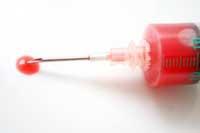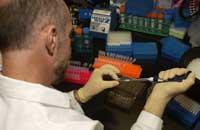They invent the detection of organ rejection by blood tests

The collection of organ transplants allows patients to survive. However, for them, it becomes something to control throughout their lives. Your body can act against the organ that has been introduced from the outside and are forced to interrupt the attack so as not to reach the loss of the organ. In turn, they have to perform periodic reviews to control if the organ is still protected. Researchers at Stanford University have proposed a way to facilitate this control in the United States: they have invented a way to know the body through a blood test that is being carried out against the organ received.
Currently, the process used to determine whether a rejection has occurred is very costly. They directly occupy fragments of the transplanted organ (that is, they perform biopsies), which is very frequent: in the first year after transplantation, at least twelve biopsies, and in the next four years two or three others.
Approximately 40% of those receiving transplants reject the organ during the first year. In short, the body responds as before any other foreign body that enters the outside. It declares that all foreign bodies are harmful and puts the immune system to work against them. For this reason, specialists seek the most appropriate receptors for the organs willing for their transplant. That is, they try to have donors and receptors have the greatest possible similarities to avoid as much as possible the attack of the immune system.

However, drugs also help to break this spontaneous body reaction and provide transplanted patients with drugs that stop the immune system response.
In spite of all these measures, sometimes there is a reduction of the organ by the body. In these cases, it is important to detect as soon as possible the symptoms of rejection, since it is easier to combat them. This is why a follow-up is so narrow after the transplants.
Remains of rejection in blood
In addition to the transplanted organ, researchers at Stanford University suspected there could be indicators of blood rejection. In fact, when rejection occurs, the cells of the transplanted organ die slowly and the fragments of DNA enter the blood of the receptor. In fact, a bit of organ DNA always appears in the blood, but when rejection occurs its level increases.
They had already realized that this effect was produced. This same group of researchers discovered years ago that in women receiving male organs, male DNA appeared in blood. The chromosome that separates women from men, the Y male chromosome, was detected in the blood of these women. And they found that the amount of Y chromosome increased in cases where women rejected the organ received.

In order to generalize this test and not only serve for women who have received male organs, they thought to go to techniques of separation between people. As in paternity tests, homicides, and other forensic studies, blood samples were taken from people who received transplants, and whether the DNA of the transplant is proper or of the organ was analyzed. Thus, they found that when donor DNA is less than 1% of total blood DNA, there is no problem. An increase of 3-4% indicates that the receptor is rejecting the transplant.
Furthermore, the researchers point out that they predicted that in the cases studied a rejection would occur faster than with biopsies. The DNA of dead cells begins to accumulate in the blood before the symptoms of rejection appear in the organ.
However, not all the rejections were identified, but 17% of the cases were declared failed. It is, therefore, a technique that must still be adjusted and that requires more essays and essays, but the researchers are convinced that it can have great potential. Other experts who have not participated in the research, such as the director of the transplant unit of the General Hospital of Massachusetts, have indicated that this is prudent news, but that it is good to devise and develop forms of biopsies.
Published in Ortzadar
Buletina
Bidali zure helbide elektronikoa eta jaso asteroko buletina zure sarrera-ontzian











